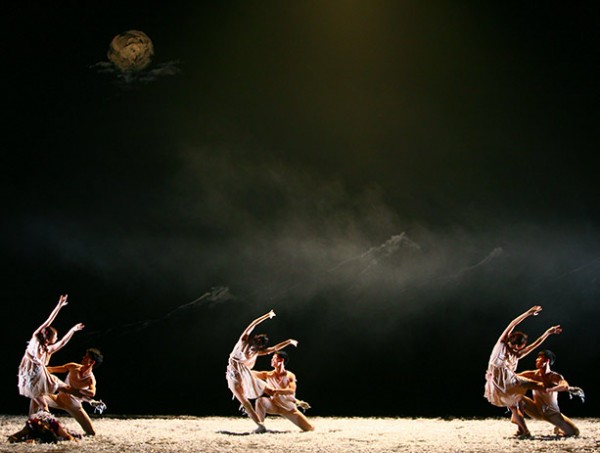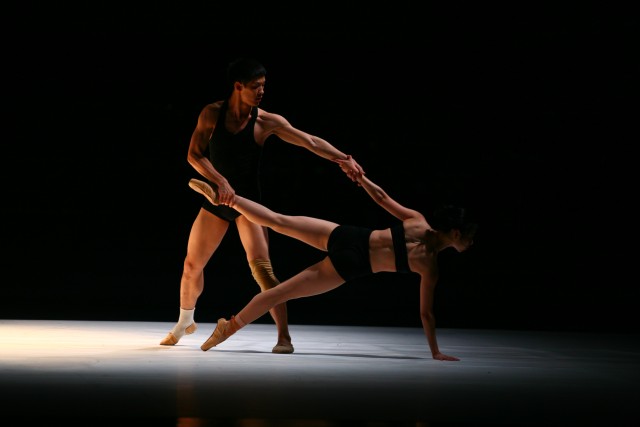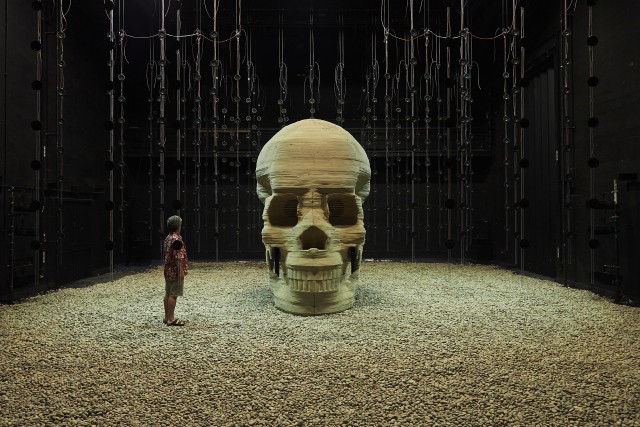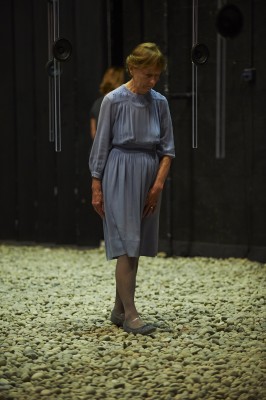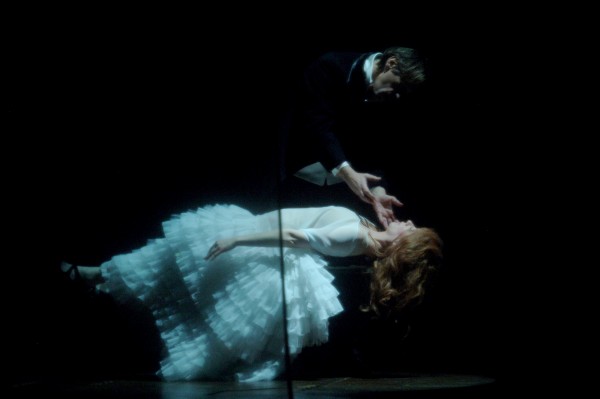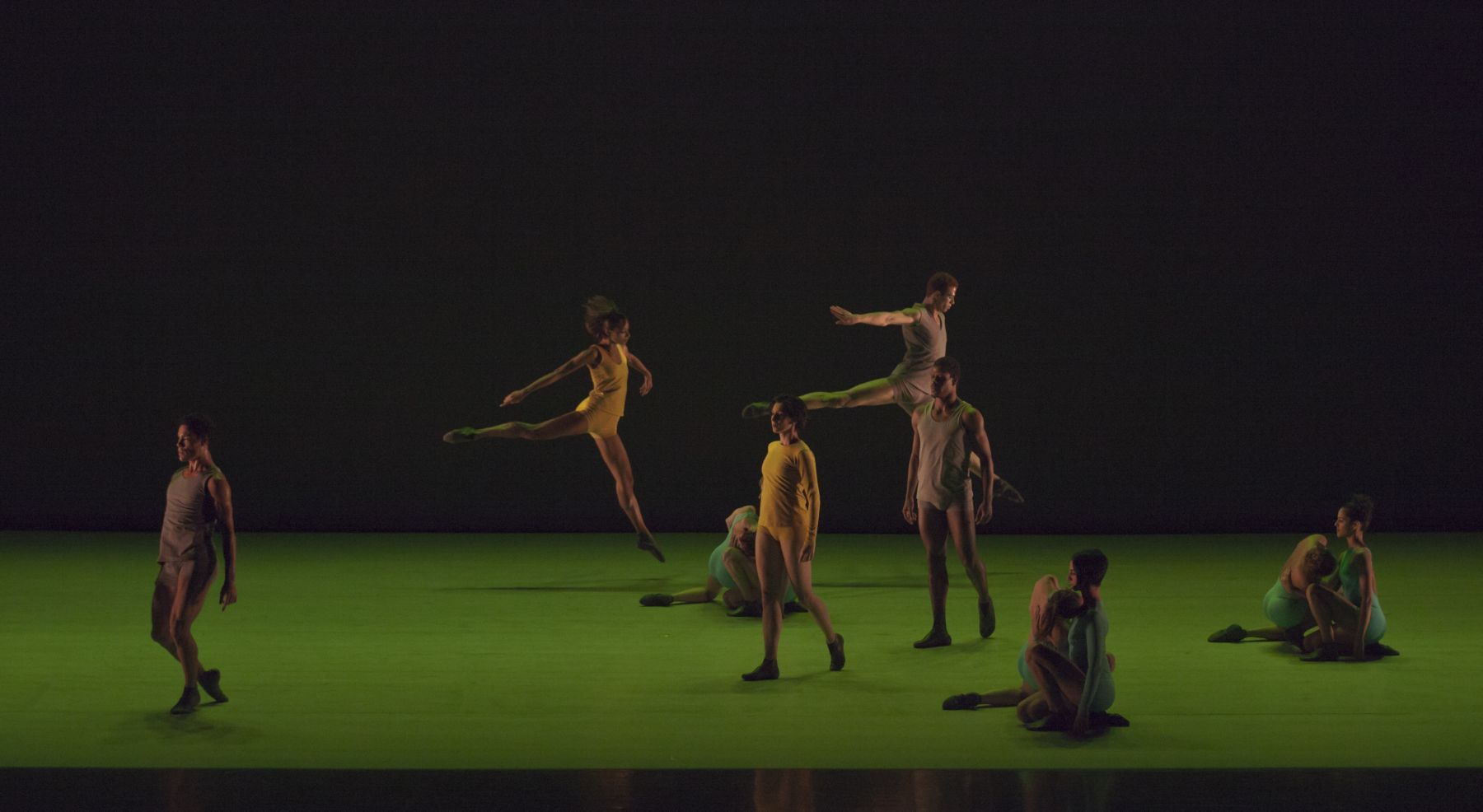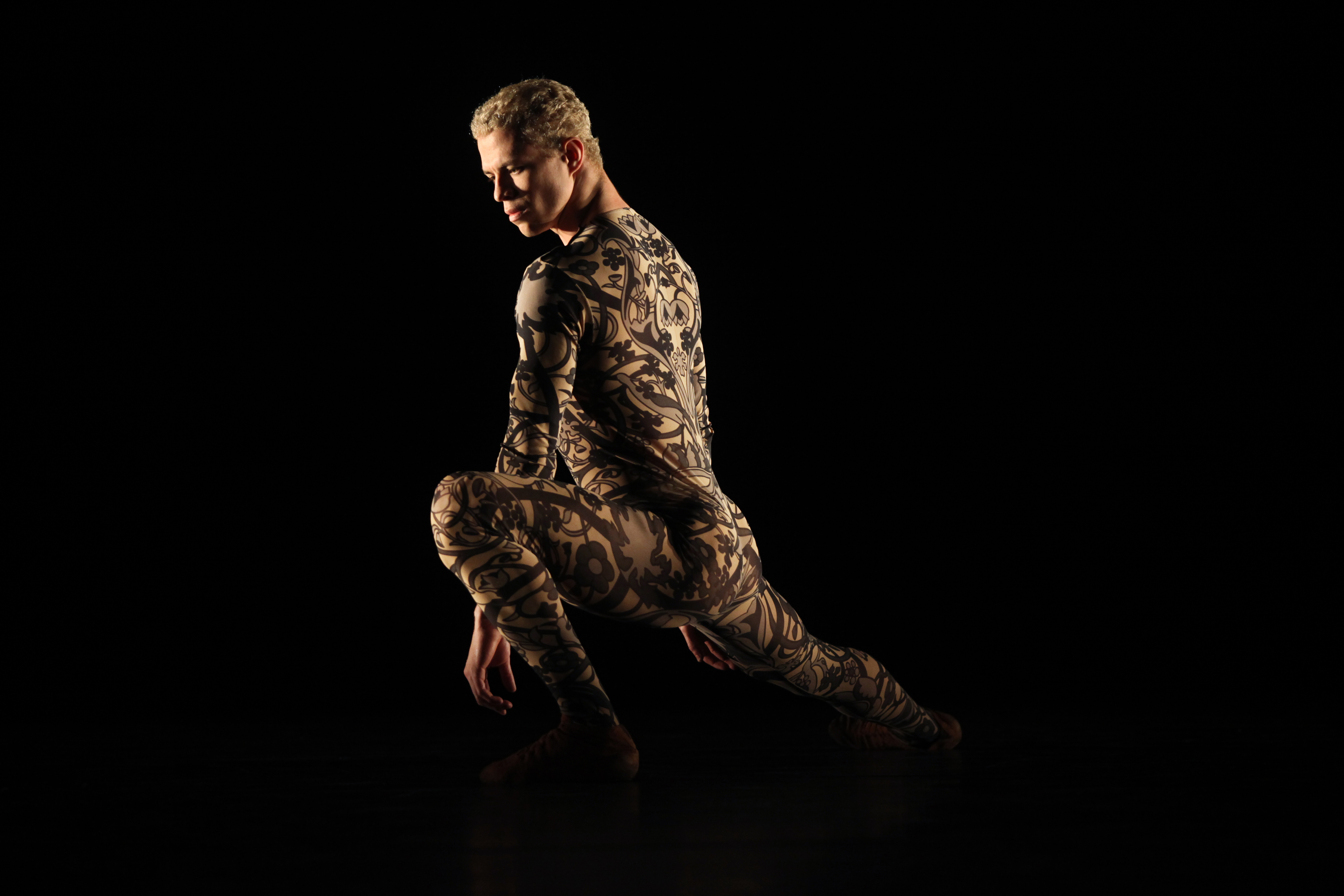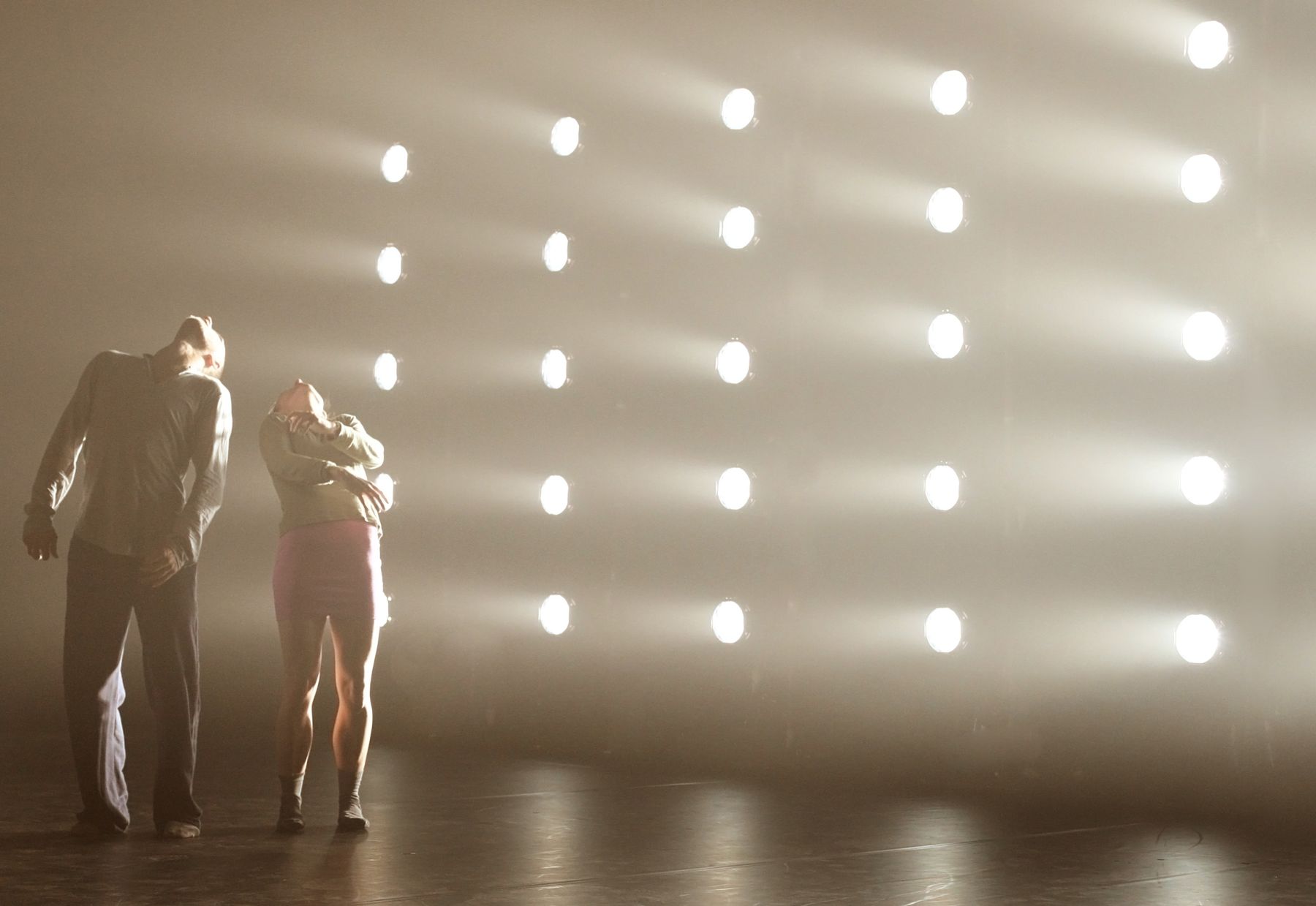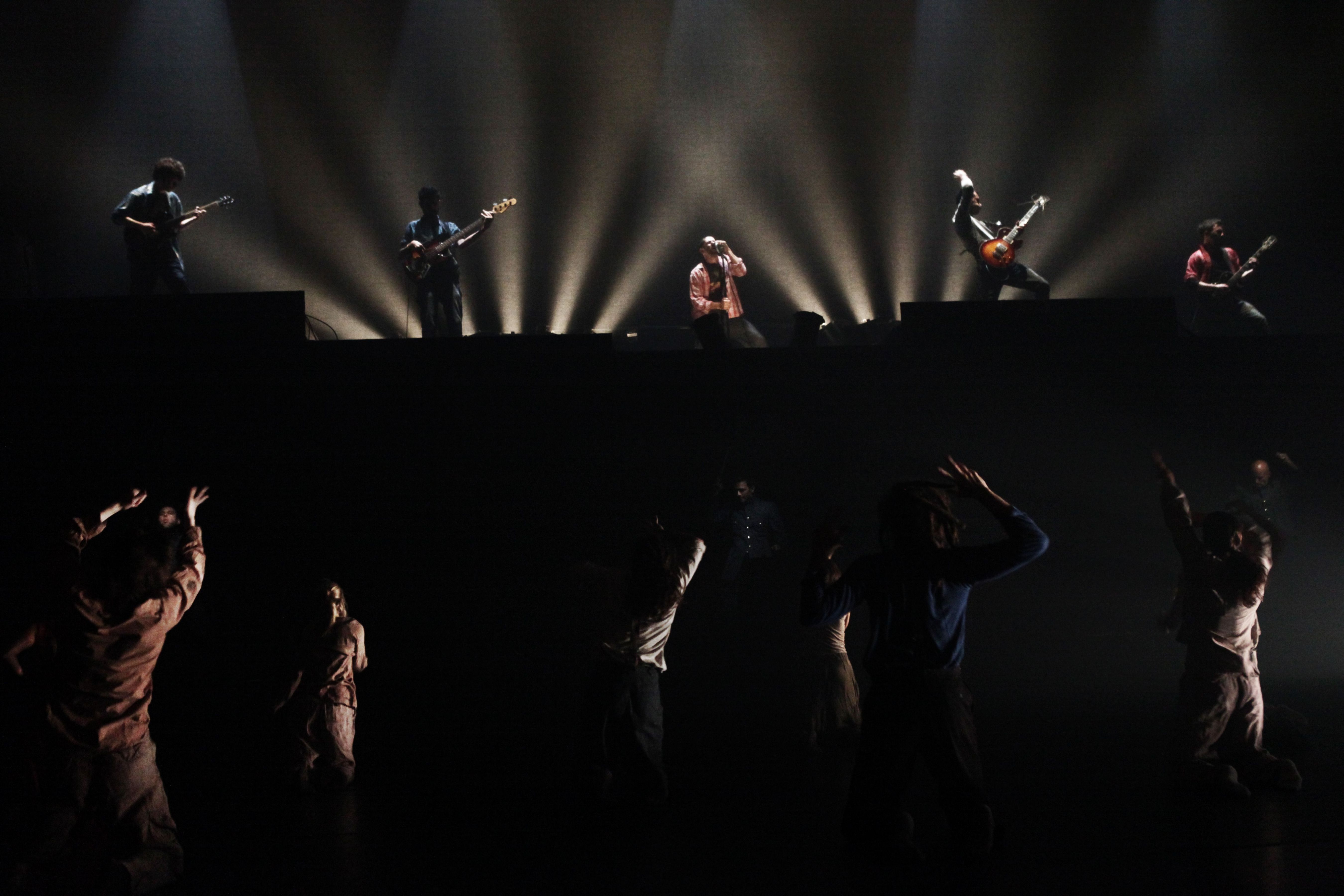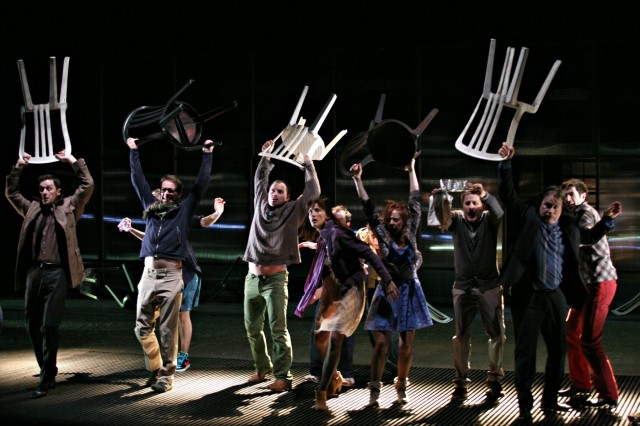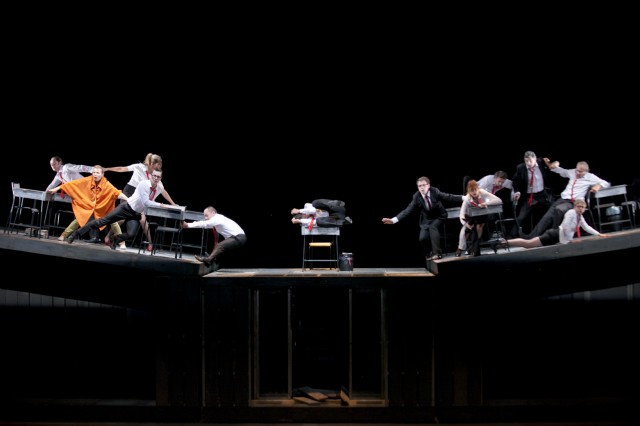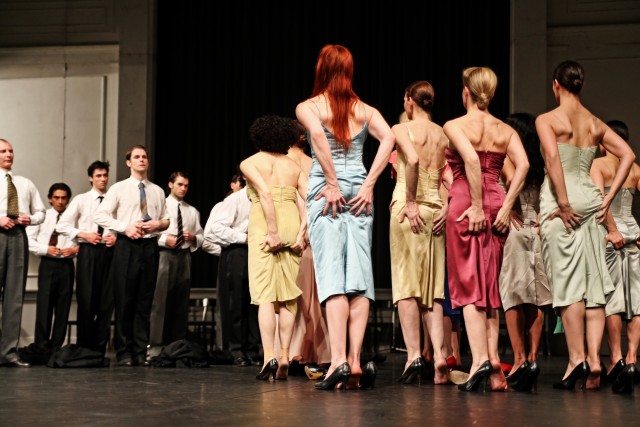
Tanztheater Wuppertal Pina Bausch’s KONTAKTHOF returns to BAM after nearly thirty years (photo by Oliver Look)
BAM Howard Gilman Opera House
Peter Jay Sharp Building
230 Lafayette Ave.
October 23 – November 2, $25-$110
718-636-4100
www.bam.org
www.pina-bausch.de/en
To celebrate Tanztheater Wuppertal Pina Bausch’s thirtieth anniversary of its New York debut at BAM — the German company presented Rite of Spring, 1980, Cafe Muller, and Bluebeard back in June 1984 — the innovative, influential, and highly entertaining troupe is bringing back one of its most famous works October 23 – November 2 at BAM’s Howard Gilman Opera House as part of the 2014 Next Wave Festival. First performed at BAM in October 1985, Kontakthof (“Courtyard of Contact”) is a playful look at the world of dance itself, as well-dressed men and women battle it out in an intensely physical competition with plenty of fun humor. The work, which includes music by Charlie Chaplin, Anton Karas, Nino Rota, Jean Sibelius, and Juan Llossas and costume and set design by Rolf Borzik, has been performed by teenagers and senior citizens since its premiere in 1978; at BAM, the current company will take the stage, led by such familiar mainstays as Rainer Behr, Dominique Mercy, Eddie Martinez, Julie Anne Stanzak, Franko Schmidt, Cristiana Morganti, Andrey Berezin, and the inimitable Nazareth Panadero. The company is continuing on following Bausch’s death in 2009 at the age of fifty-eight, with longtime TW dancer Lutz Förster as artistic director. It’s always an event when they come to Brooklyn, having dazzled dance-theater lovers with such thrilling productions as Vollmond (Full Moon), “…como el musguito en la piedra, ay si, si, si…” (Like moss on a stone), Danzón, Nefés, Masurca Fogo, and so many others over these last thirty years. If you’ve never seen this fabulous company in person, stop what you’re doing right now and pick up some tickets while they’re still left; you won’t be disappointed. You can also check out Wim Wenders’s Oscar-nominated Pina on Netflix to get a taste of what you’re in for. In conjunction with Kontakthof, on October 25 at 12 noon BAM and Dance Umbrella will present a free live stream of “Politics of Participation,” a cross-Atlantic panel discussion at King’s College with Penny Woolcock, Matt Fenton, Kenrick “H2O” Sandy, and Michael “Mikey J” Asante and at BAM with Stanzak and Simon Dove, moderated by Dr. Daniel Glaser. And on October 27 at 7:30, BAMcinématek will screen Dancing Dreams: Teenagers Dance Pina Bausch’s “Contact Zone,” followed by a Q&A with longtime Tanztheater Wuppertal members Bénédicte Billiet and Mercy, moderated by Marina Harss.
